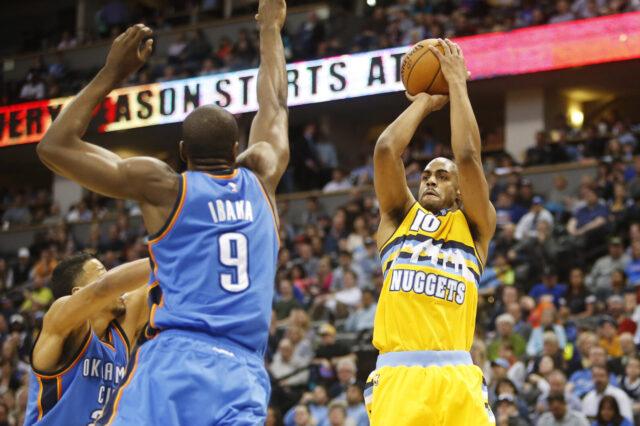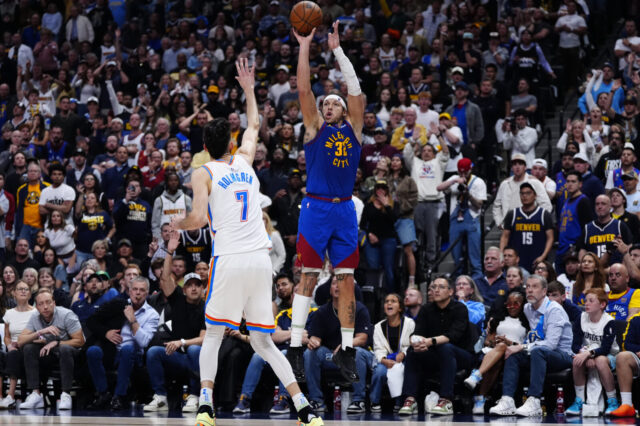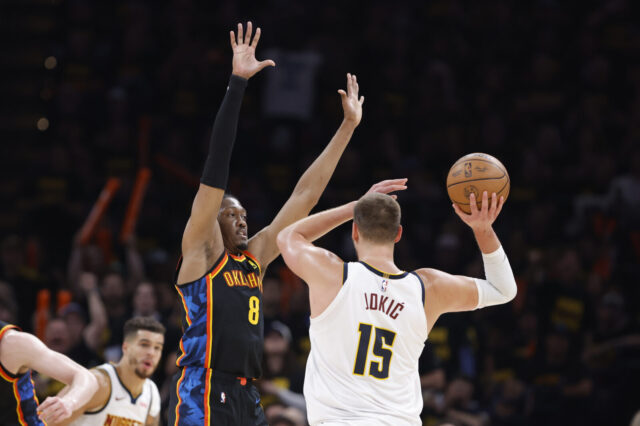Jake Rauchbach coached at the collegiate level, founded The MindRight Pro Program and trained numerous professional and Olympic athletes. Now, Rauchbach provides high performance analysis on the NBA and college basketball and serves as the Player Performance Specialist for Temple University's men's basketball team.
This past season, along with the emergence of Gary Harris and Nikola Jokic, Denver Nuggets’ youngster Juan “Juancho” Hernangomez showed the potential for developing into a solid to stellar player in this league. As the 15th overall pick in the 2016 draft, Juancho’s stretch four shooting ability, along with continued improvement in his game, could gives Nuggets’ fans lots to cheer for next season. The lanky Spaniard has already displayed a solid skill-set. With the right amount of improvement over the summer, Hernangomez could get the chance to earn even more playing time, while substantially making a bigger impact in Denver. The question is what is the fastest method to facilitate the improvement Juancho is looking for?
The answer is that Juancho must approach his performance improvement from all angles. Employing a process geared towards creating improvement on the mental/emotional, and not just physical level, could help Juancho sustain the most amount of improvement prior to next season. Let’s open the hood on Juancho’s game and break down the best possibly way for Hernangomez to generate this improvement.
Obviously, a pillar of Hernangomez’s game is his shooting. With his quick release and knack for finding space around the perimeter for open shots, Juancho earned his offensive keep this year due in part to his knock down capability. His 41% from behind the arch and 45% from the field was solid, and based upon his strong shooting mechanics and potential for expanding his off ball game, expect Hernangomez to shoot it at an even better clip next season off catch and shoot situations.
Many times this past season, Juancho stole perimeter shots by hiding behind help defenders and/or by finding the open space around the perimeter, as he does in the above clip against the Thunder. He ranked in the 90th percentile in the league on catch and shoot opportunities. However, next season, Juancho must begin to add the ability to ulitize off ball screens effectively, especially if he hopes to become more of an integral part of the Nuggets’ offense. On low volume, Juancho shot the ball well coming off of screens and based on his solid mobility and athleticism, this figures to be the next progression in his game.
Another part of his game that must improve is his ability to put the ball on the floor, especially in catch and shoot situations when his defender closes out on him and/or runs him off of the three-point line. Juancho’s one and two dribbles pull-up game was non-existent this year. Whether in spot up, hand-off, or in cut situations, when Juancho put the ball on the floor, he was trying to get all the way to the basket or shoot a mid-range off balance leaner. He many times did not look comfortable and appeared unpoised in the mid-range as he does in the below clip versus the Kings.
When players perform at their best, they react off of instinct and/or muscle memory. When these instinctual performance processes are clear, players can naturally perform at their best. However, just like a computer’s hard drive that can become slowed and/or bogged down by malware and/or cookies programs, a player’s operating system can become slowed and/or blocked altogether. Many times a player’s improvement is mitigated, because on the subconscious or operating system level of a player, mental and emotional blockage resides and can impede performance improvement. For example, a poor shooting performance during a state championship game from a high school can still linger like mal-ware in the back of a player’s operating system. This ultimately can slow down a player’s progression over the long term.
That’s why zeroing in on improving certain areas of his on-court game, while simultaneously unlocking the areas of his consciousness that may be holding him back from continued high-performance, could have the effect of helping Juancho improve his performance by leaps and bounds heading into next season. This has been known to happen for past players who have addressed both the physical and subconscious element of performance.
Example Player 1: By eliminating the mental blocks relating to several poor performances in his high school, over a 6-week period the player was able elevate field goal percentage by 12%.
Example Player 2: Neutralizing off-court subconscious blockages relating to a family situation produced a spike in on-court performance, causing field goal and three-point percentages to improve by over 10%.
For younger players like Juancho acclimating to a new level of basketball, addressing both the physical and mental/emotional element of performance is vital. Implementing an approach that addresses both elements by delving into the deep dynamics that affect player performance could have huge implications for Juancho’s overall game and his shooting percentages.
On the defensive end, Juancho struggled when guarding his man in one-on-one situations and when he was guarding the ball handler in pick and roll situations, giving up 1 point per possession and 1.06 points per possession, respectively. Many times, Juancho just looked out of position and out of sorts when covering some of the more veteran players in the league, as he does here against the Kings’ Garrett Temple and the Rockets’ Trevor Ariza.
Many times, coaches refer to being in the right position on defense as court awareness. Court awareness can be hindered when players get stuck in the emotional element of the game, such as being scared to make a mistake, being nervous, and lacking confidence on the defensive end of the court when going against older, more experienced players. By getting to the core of why he hasn’t yet broken through as a strong defender on the deep subconscious level, and eliminating any barriers that exist, Juancho could begin to experience similar improvement that past players taking the same approach have sustained. An example of this improvement can be seen below.
Player Example # 3: After eliminating emotional blockages relating to lack of confidence, along with numerous offensive categories, the player was able to increase steals per game by over 1 per game.
For Juancho, as a big man, increasing steals may not be the operative goal, but keeping his man in front in one and coverage and improving pick and roll efficiency could be. He will also need to become tougher, react faster, and have more of an edge when it comes to guarding in these situations next season. Improving his defensive game starts with his effort and his mindset.
As he enters his first off-season as NBA player, for Hernangomez to become a more dependable and indispensable option for the Nuggets, improvement is imperative. By focusing on aligning both the physical and the deep muscle memory levels of his game, Juancho could sustain big improvement in the off-season. Achieving this could help him take the steps needed to play a much bigger role for his team during his second season in Denver.
*All statistics are courtesy of Synergy and Basketball-Reference.com and are current as of May 8, 2017.


